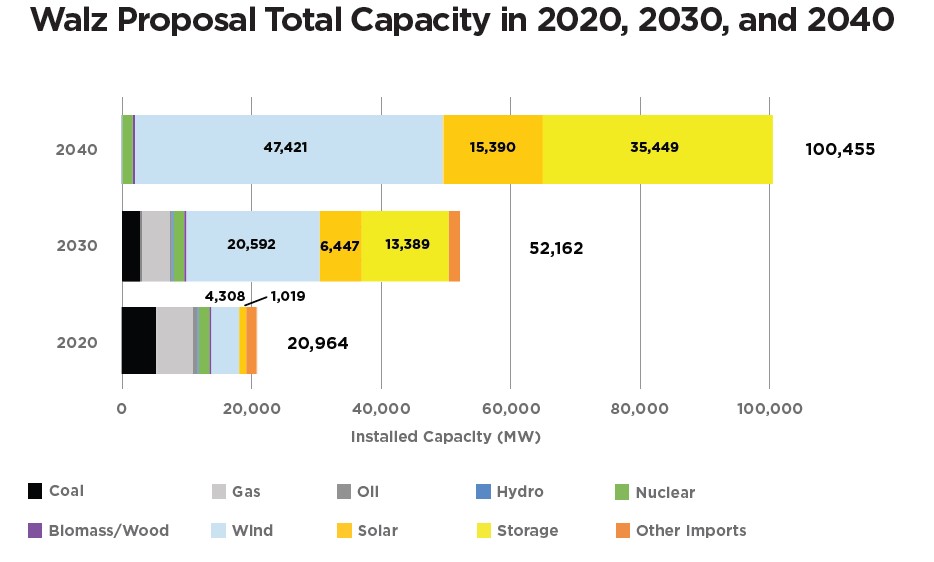Part 3: Quintupling installed power plant capacity is expensive
In Part 2, we discussed how the Walz Proposal would necessitate a dramatic increase in power plant capacity in Minnesota. In Part 3, we will discuss how much it will cost to put all of this new capacity into place.
Click here to view other installments in the series.
Quintupling installed power plant capacity is expensive
As we discussed in Part 2, the Walz Proposal would require a nearly five-fold increase in power plant capacity serving Minnesota’s electricity demand compared to 2020.

While adding power plant capacity to the grid may sound like a good thing, increasing
capacity merely to meet renewable energy mandates rather than meeting electricity
demand will unnecessarily cost Minnesota hundreds of billions of dollars.
In our analysis, we used cost data from the U.S. Energy Information Administration’s Electricity Market Module for Region 3. Using these figures, we determined that building the solar panels, wind turbines, and battery storage facilities necessary to comply with the Walz Proposal would cost $67 billion, $19 billion, and $46 billion, respectively.
Then, we had to account for the fact that wind turbines only last for 20 years, and solar panels only last for 25 years, which means every wind turbine or solar panel built today will be scrap metal by 2050. Rebuilding these facilities to maintain a carbon-free grid through 2050 would add another $63 billion to the cost of the Walz Proposal.
These expenditures, along with additional expenses for transmission, property taxes, and utility profits, would dramatically increase the cost of electricity if the Walz Proposal were enacted. The impact this would have on residential electric bills will be covered in Part 4.